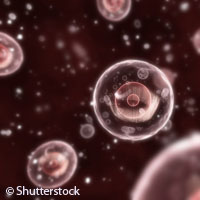Scientists find link between master gene and neurodegenerative disorders
Garbage comes in all shapes and sizes. Cells, the body's functional units of life, also produce 'garbage' - debris and dysfunctional elements the body must get rid of. Failure to dispose of this garbage could trigger various neurodegenerative disorders in adult life, including Parkinson's disease, and rare genetic diseases in children. The latter diseases are called lysosomal storage disorders and include Fabry and Batten diseases. An international team of scientists, funded in part by a European Research Council (ERC) grant under the EU's Seventh Framework Programme (FP7), has discovered a master gene that controls both the lysosomes that break up the debris as well as the cellular compartments that encapsulate the material and fuse with lysosomes to completely dispose of the debris. The findings, presented in the journal Science, could lead to the development of new ways to fight these diseases, both for the young and old. 'The master gene (transcription factor EB or TEFB) controls the function of lysosomes (organelles in the cell that break down waste and cellular debris) and controls the function of autophagosomes [cellular compartments],' explains Dr Andrea Ballabio of the Telethon Institute of Genetics and Medicine (TIGEM) in Naples, Italy, a professor of molecular and human genetics at Baylor College of Medicine (BCM) and the Texas Children's Neurological Research Institute (NRI) in the United States and senior author of the study. 'Defects in this process are also implicated in neurodegenerative disorders such as Alzheimer's and Parkinson's diseases.' Professor Ballabio equates the autophagosomes to 'garbage trucks' that transfer the debris they pick up to the lysosomes that 'incinerate' it. Finding the single master gene with the capacity to control this activity is 'one of the few examples of coordinated regulation of two cellular compartments,' he points out. The researchers had already determined that TEFB regulates the creation and development of lysosomes, effectively increasing their number. The question for them was to find out how the gene could be used to boost the cell's capacity to dispose of waste products. The key link was getting more autophagosomes. 'We thought there would be no point in increasing the incinerators unless we could also increase the garbage trucks,' Professor Ballabio says. TEFB, say the researchers, controls both activities. Commenting on the research, lead author Dr Carmine Settembre, also from TIGEM, BCM and NRI, says: 'This understanding paves the way to finding drugs to activate the process.' Professor Ballabio goes on to say how brilliant a tool this gene is. 'By modulating the activity of a single gene, we can induce the activity of a variety of other genes that are involved in the process of degradation.' Researchers from the Cambridge Institute for Medical Research of the University of Cambridge in the United Kingdom contributed to this study. Commenting on the trans-Atlantic collaboration, NRI Director Dr Huda Zoghbi says: 'Collaborations are the best way to accelerate discovery and advance the search for ways to impact neurological disorders. This partnership between NRI, BCM and Telethon Institute of Genetics and Medicine is a fine example of the power of collaborations.'For more information, please visit:European Research Council (ERC):http://erc.europa.eu/Science:http://www.sciencemag.org/Telethon Institute of Genetics and Medicine (TIGEM):http://www.tigem.it/
Countries
Italy, United Kingdom, United States



